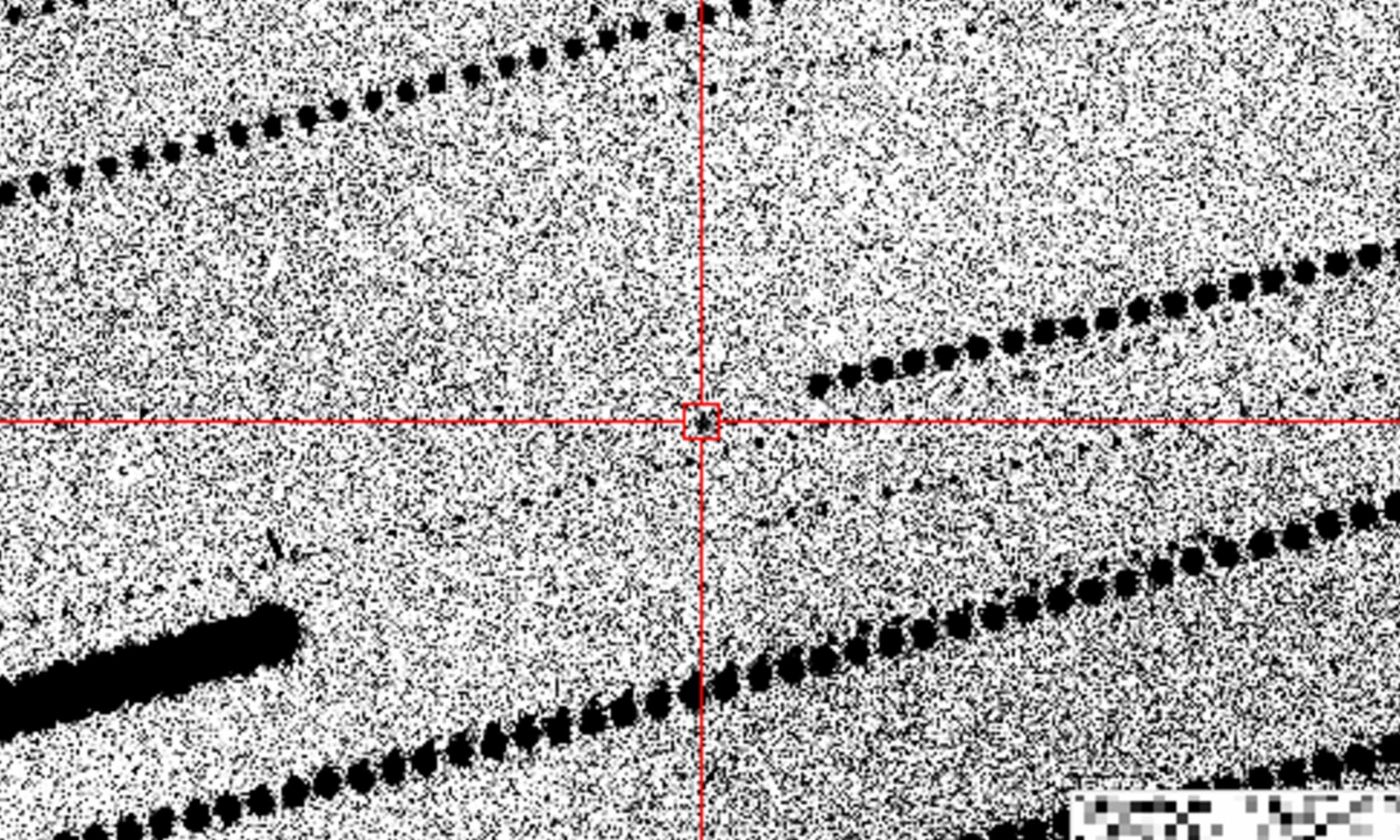For much of the 20th century, “petroleum politics” shaped international policy. In the 21st century, a new set of resources has taken center stage: critical minerals. Sourcing and extracting these minerals have become a priority for…
Blog
-

Tramadol And Antidepressants Raise Seizure Risk – European Medical Journal Tramadol And Antidepressants Raise Seizure Risk
TRAMADOL with CYP2D6-inhibiting antidepressants was associated with higher seizure rates in nursing home residents in Medicare. The association came from a population-based cohort using a complete Medicare nursing home sample from 2010 to…
Continue Reading
-

Mysterious JWST Object Might Be The First Galaxy In The Universe
A recent detection from JWST is being widely discussed. The discoverers suggest that it might be an incredible record-breaker: it could be the oldest galaxy we have ever seen. This is yet to be confirmed, and other hypotheses are also very…
Continue Reading
-

US study connects Tropaeolum majus extract to skin-aging improvements
A recent study published in the scientific journal Cosmetics suggests that an extract from Tropaeolum majus, better known as nasturtium, could help slow signs of skin aging by supporting the skin’s ability to manage stress and energy at the…
Continue Reading
-

Why it’s important to advance coherence in the EU’s circular economy policy mix – CEPS
Achieving a coherent policy mix – meaning a set of different policies that are synergetic and don’t conflict with each other while pursuing a specific goal – has long been an objective in EU policymaking.
As early as 2001, the EU Strategy for Sustainable Development argued for improved policy coherence and reduced policy spillovers to achieve ‘economically, socially and ecologically sustainable development’.
In the 2019-24 political cycle, the European Commission’s Circular Economy Action Plan emphasised that a coherent mix of policies across all stages of a product’s lifecycle can help scale up green business models and sustainable resource consumption. Similarly, the Green Deal Industrial Plan identified a coherent policy environment as a key pillar in its strategy for rolling out green technologies.
Policy coherence is gaining more prominence as the Commission advances its Omnibus work to simplify the regulatory framework and reduce administrative burdens for EU businesses. In theory, a well-aligned policy mix with minimal conflicts can help ease these burdens and support the EU’s sustainability and competitiveness goals.
But where do things stand today? In short, there’s been some positive developments, but more can (and should) be done – and next year’s expected Circular Economy Act would be a good starting point.
Coherence in the present policy mix – it’s a mixed picture
While coherence with existing EU and international policies is one of the criteria in impact assessments, in line with the Commission’s better regulation guidelines, there are very few empirical assessments of the level of coherence in the overall policy mix – and none specifically for the circular economy.
A new paper (full disclaimer, co-written by this author with Valeria Zambianchi) seeks to address this gap by focusing on the EU’s circular economy policy mix as it was shaped during the 2019-24 political cycle. The analysis focuses on four sectors – electronics and ICT, batteries, automotive and critical raw materials – and drew on the experiences of business actors working within these sectors.
The assessment paints a mixed picture. On average, the policies in the mix have a medium-to-high degree of coherence with each other. Importantly, at the strategic level, the European Green Deal stood out as the most coherent policy. Put simply, its long-term framework and strategic direction were seen by businesses as largely in line with the other individual policies in the mix, suggesting a strong and consistent signal to EU businesses.
However, issues start to emerge one level down. Two follow-up strategies – the Chemicals Strategy for Sustainability and the EU Industrial Strategy – ranked the lowest in terms of experienced policy coherence. Moreover, four major strategies, namely the Circular Economy Action Plan, the EU Industrial Strategy, the Chemicals Strategy for Sustainability and the Green Deal Industrial Plan, all show medium-to-low levels of policy coherence with each other, which suggests their goals are not well-aligned.
Issues of incoherence become more apparent when looking into how different directives and regulations in the mix interact with each other. Chemicals policies, namely the Reach Regulation and the RoHS Directive, show low-to-medium levels of coherence with several other policies, including the recently adopted Batteries Regulation, Right to Repair Directive and Ecodesign for Sustainable Products Regulation. What these tensions highlight is that the longstanding disconnect between circularity and chemicals policies persists, despite recent legislative developments.
Even more eye-opening is the low-to-medium coherence between the EU Taxonomy Regulation and most of the other assessed policies in the mix, including the Critical Raw Materials Act, the EU Industrial Strategy and the Green Deal Industrial Plan. Introduced in 2020 to provide a transparent framework for defining sustainable investments, the Taxonomy Regulation has caused businesses to doubt about whether the criteria and selection of sectors are consistent with the priorities of the other policies in the mix.
The Waste Shipment Regulation is another example of a policy demonstrating low-to-medium coherence, reflecting its limited alignment with various other policies. Businesses highlighted the persistent mismatch between waste transport rules and circularity objectives. They pointed to the lack of synergies between the Regulation and the EU’s industrial policy goals, particularly those that aim to boost the use of secondary raw materials stemming from the Critical Raw Materials Act.
Finally, another notable finding is that many businesses perceive limited synergies between the circular economy’s objectives and those of the trade and climate policy domains.
Taking steps towards a more coherent policy mix
Amid ongoing discussions over the need to reduce the burden on businesses, the above findings highlight areas where sectoral and horizontal policies within the expanded circular economy policy mix have intersected and resulted in incoherence. Going forward, efforts to improve coherence should begin with the Circular Economy Act proposal – expected sometime in 2026 – that will aim to develop an EU single market for circular products and services.
The Act’s upcoming impact assessment is a good opportunity to include an explicit analysis of how synergies between the various policies can be improved and conflicts avoided. This can then provide the groundwork for concrete actions to strengthen the single market for circular products and services, which would be supported by a thorough trade-off analysis.
One such action could be in the domain of public procurement criteria for circular goods and services. These would need to balance climate and circularity objectives and thoroughly consider impacts across the different lifecycle stages of products.
A comprehensive fitness check, like the one conducted in 2014 for the waste acquis, could also be conducted to reflect policy developments over the past decade. On top of this, an oversight cross-DG team within the Commission could be tasked with screening different legislation and promoting compatibility between different policies.
Given that policy goals increasingly integrate objectives from industrial policy, competitiveness, the circular economy, and climate policy, it will also be important to send consistent signals to EU businesses. To do this, future strategies in these domains should be accompanied by a dedicated roadmap outlining how different actions impact cross-cutting areas, as well as a dedicated monitoring framework to easily track progress.
This Expert Commentary is based on the journal article ‘Unpacking policy coherence: a network analysis of the EU policy mix for the circular economy’
Continue Reading
-

US funding cuts threaten decades of progress in pediatric tuberculosis
A new study projects that US funding cuts to global health aid will have a catastrophic effect on pediatric TB, with children in Sub-Saharan Africa and Southeast Asia likely to experience a significant spike in preventable cases and…
Continue Reading
-
Just a moment…
Just a moment… This request seems a bit unusual, so we need to confirm that you’re human. Please press and hold the button until it turns completely green. Thank you for your cooperation!
Continue Reading
-
Contract extension at FC Bayern: What makes Vincent Kompany's trademark unique – FC Bayern
- Contract extension at FC Bayern: What makes Vincent Kompany’s trademark unique FC Bayern
- Vincent Kompany signs new Bayern Munich contract running until 2029 BBC
- His bundesliga: Latest News, Schedules, and Results Cricketnmore
- Bayern Munich signs…
Continue Reading
-

An asteroid the size of a car grazed the Earth over Antarctica
Before sunrise on October 1, 2025, a tiny asteroid labeled “2025 TF” skimmed above Antarctica at an altitude near 266 miles, roughly the same orbit used by the International Space Station. The closest approach occurred at 00:47:26 UTC with an…
Continue Reading

